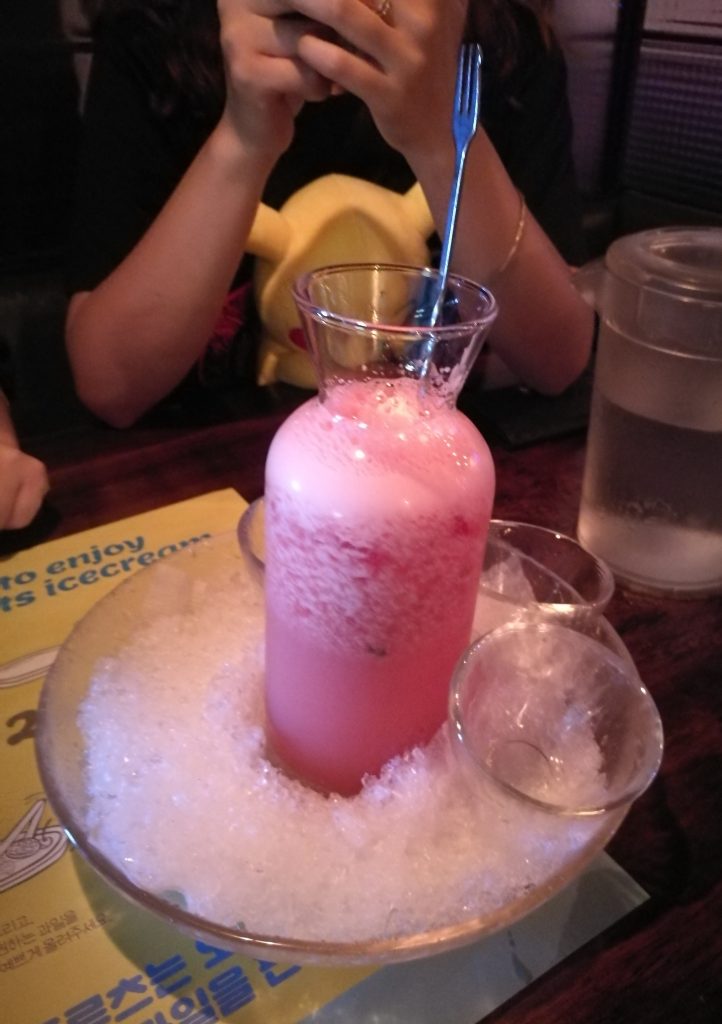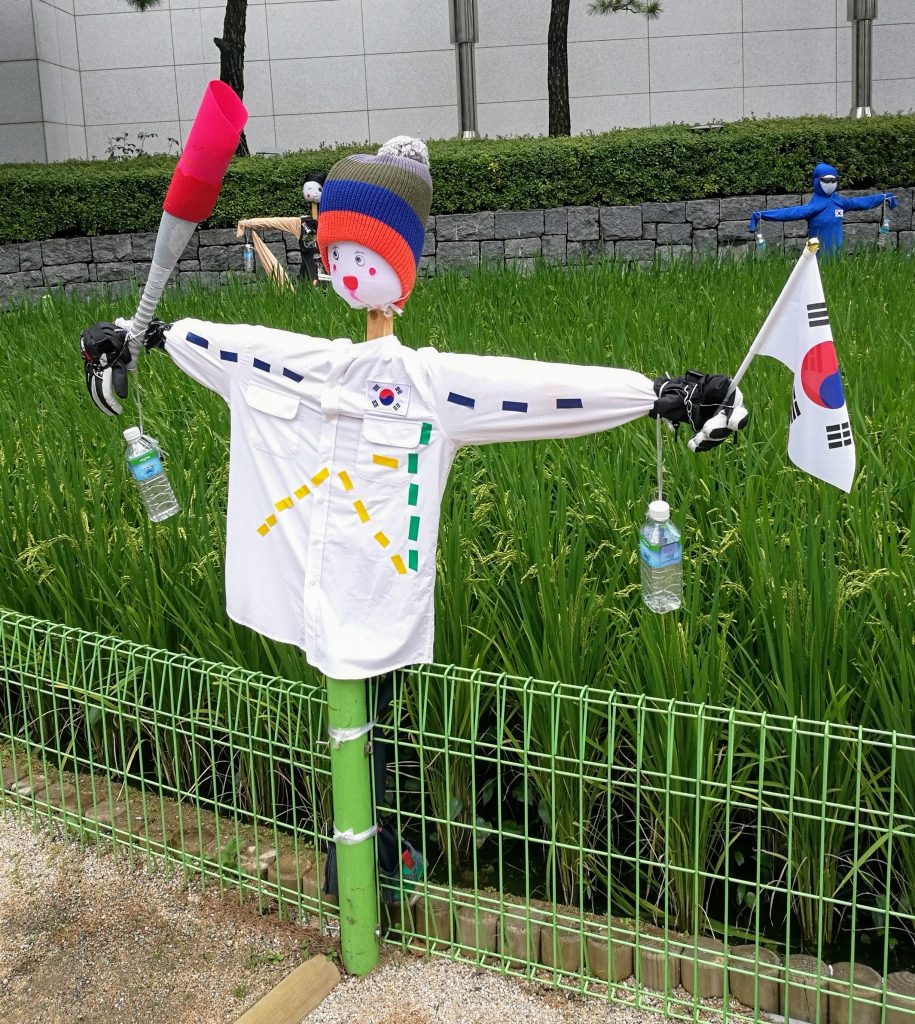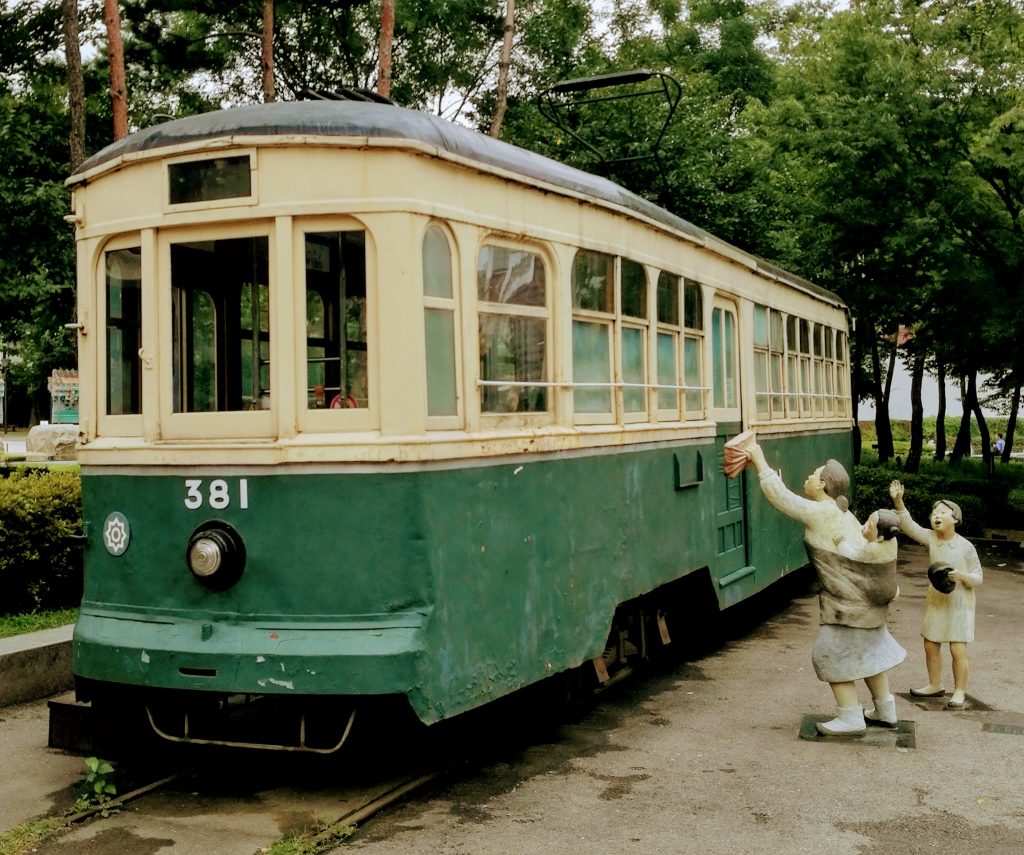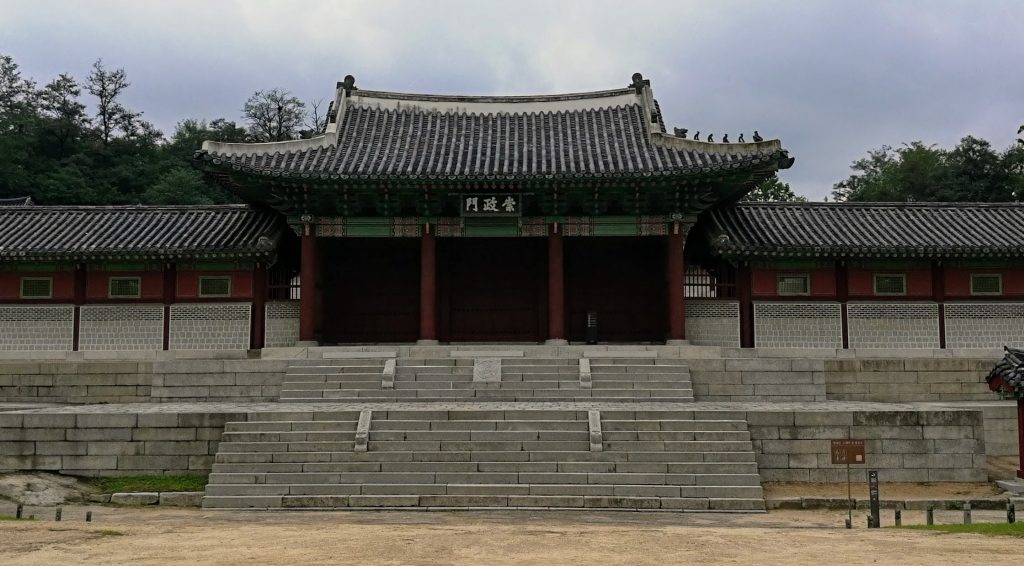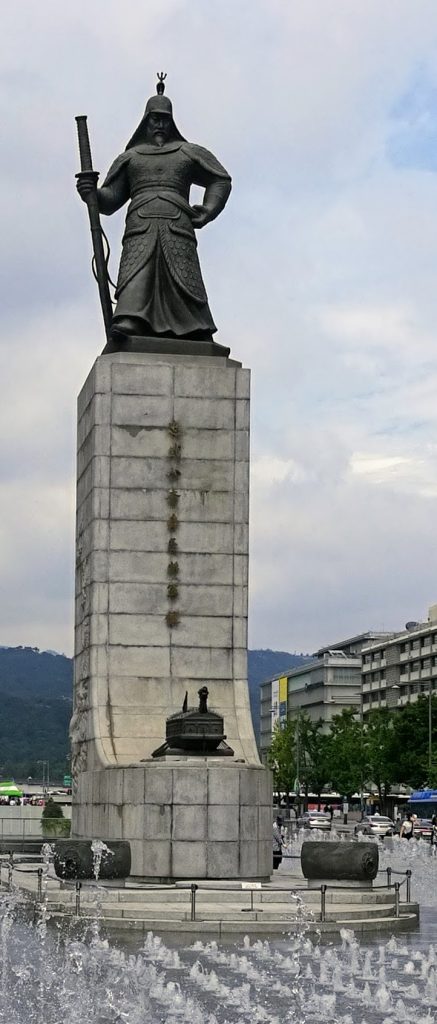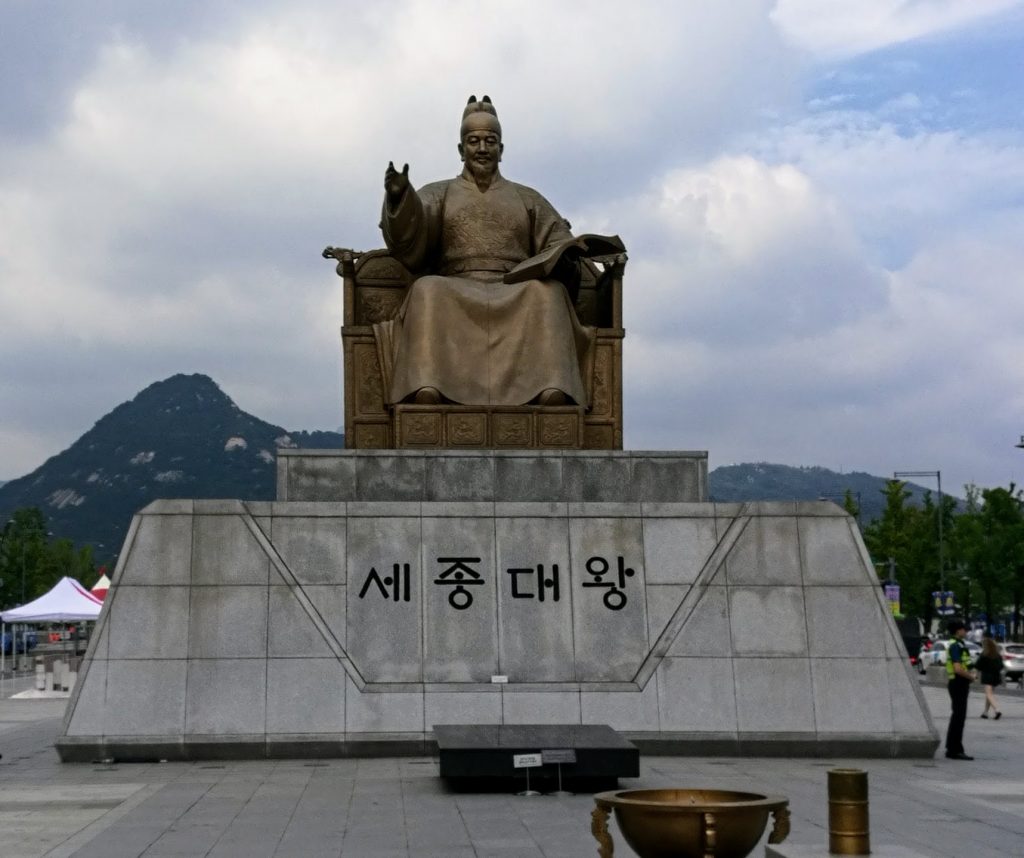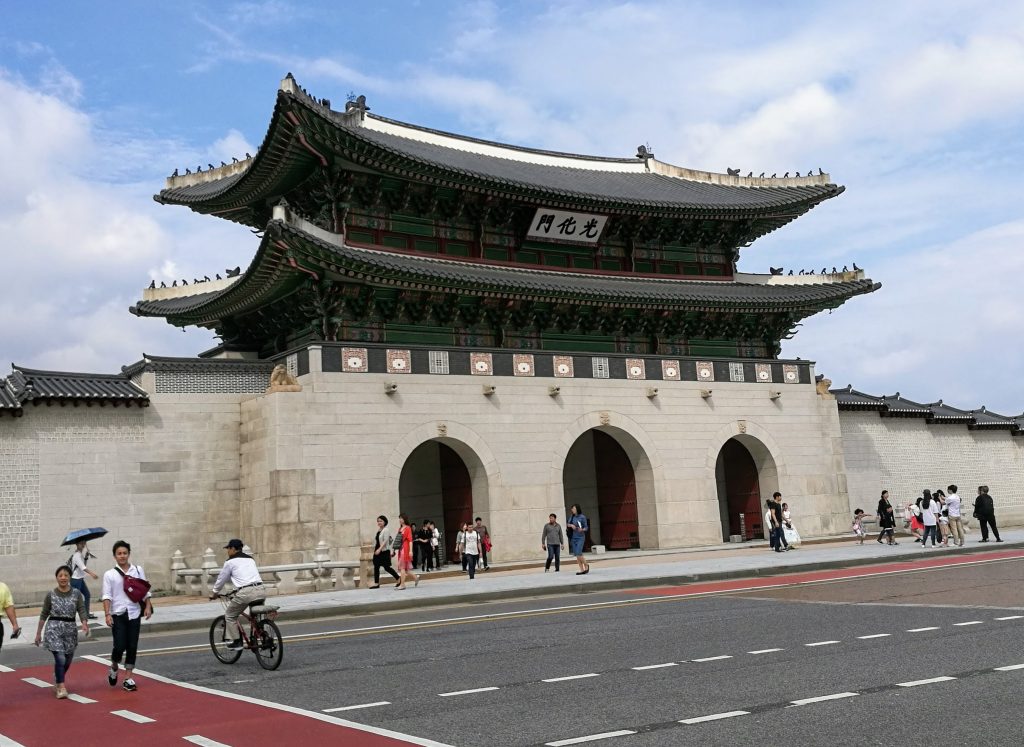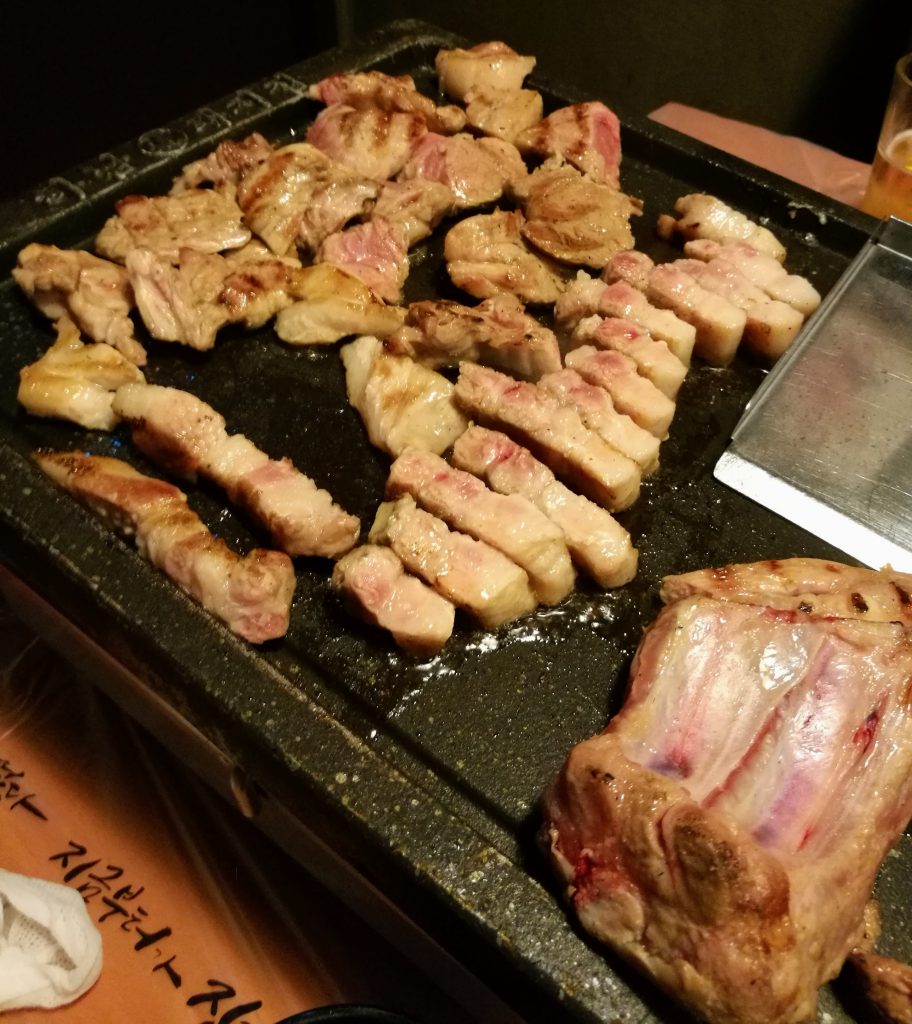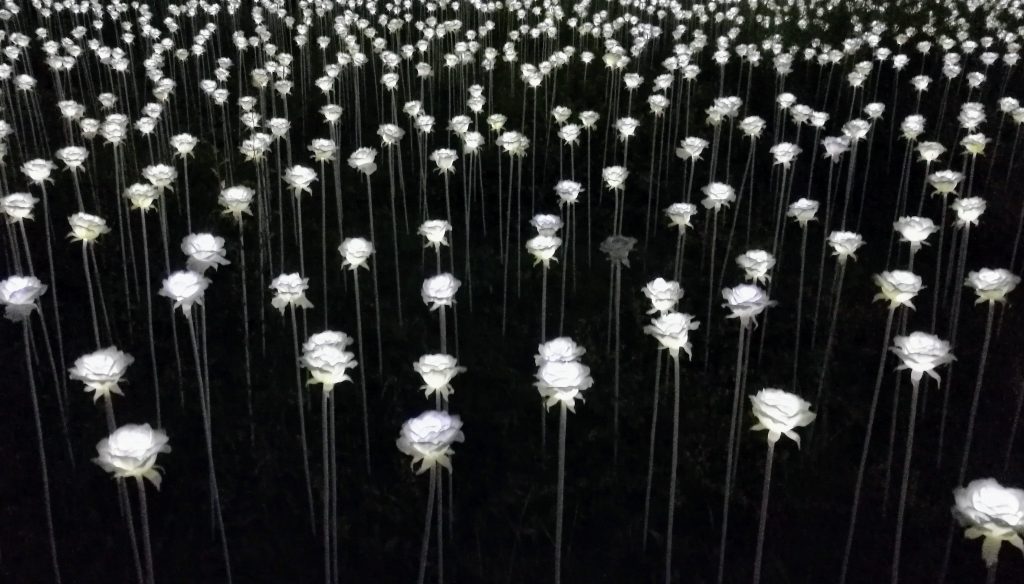When I got off the plane, one could say I was quite tired. I can barely fall asleep in my own bed, let alone on an aircraft in what my body thinks is the middle of the evening. When I landed in Seoul, it was about 5:00 PM local time, or 4:00 AM in the time zone I had just left, which also meant it was 1:00 AM in my home of California, whose time zone I was still somewhat used to. Once I made it through all the formalities of entering a new country, I took a train from the airport to the city, which took around an hour. The train was comparable with any non-high-speed intercity train I have taken in Europe – in other words, it was a clean, comfortable journey. When I arrived at Seoul Station I somehow managed to get my bearings straight and make my way to the Kimchee Downtown Guesthouse where I was to stay for four nights.
Kimchee Guesthouse was the absolute cheapest accomodation I found in Seoul at around $7 per night, and I will be upfront in saying that it is not the nicest hostel I have stayed at. If you are an absolute clean freak I would not recommend this hostel, though if you just need to crash somewhere for super cheap this is your place. Personally, I can be comfortable in almost any situation, and as I spent almost the entirety of my waking hours in Seoul outside exploring, Kimchee worked out for me because it was a place I could come back to at night, put my head down to sleep, and wake up to go out again. The best part of the hostel was the location. It was about a 30 second walk from a convenience store and a metro stop, and from the metro stop you could use Seoul’s fabulous metro system to go all over the city. A lot of Seoul’s major sights were even in walking distance if you happen to be athletic or don’t want to buy a subway fare.
Once I finally got settled in it was around 8 pm, and I had been awake for close to 24 hours at this point. But my friends in Seoul wanted to meet me for drinks, and what kind of friend would I be to decline? A very bad one indeed! So we went out and I ordered some cocktail that had an English translation along the lines of “I don’t want to go home tonight,” which I guess made sense considering I was to be away from home for at least seven more months… I also ordered something referred to as a “gorgonzola pizza,” which was quite interesting. It seemed like two tortillas with cheese on top and in between, and was also served with honey on the side. Unfortunately I forgot to take photos of pretty much everything except for the carafe of watermelon soju, which is probably my favorite Korean drink.
Upon realising that it was now past 4:00 AM and I had been awake for definitely over 30 hours, it was time to go home and get some shut-eye. I took a taxi which cost 7100 won (around $7) which I found quite reasonable and went to sleep.
For some reason I got up at around 8:00 AM that morning and decided to explore the city. Since many sites were very close, I decided to basically go on a walk and see what there was around me. I passed by an Agriculture Museum, which had some displays of local crops and old-style farming methods outside, which was interesting.
Then I made it to the Seoul Museum of Historym which was unfortunately closed on Mondays but still had some interesting exhibits out front, including an old Seoul streetcar. It was close to the Korean National Museum which also appeared to be closed on Sundays, but it was right next to Gyeonghuigung, a smaller palace in Seoul, also closed on Sundays but had a nice view from outside. I wanted to check it out a little bit closer so I went up a back pathway to check it out, but a few minutes later a security guard came to tell me I wasn’t allowed in this area. It was a bit embarrassing, and reminded me of the time I set off the alarm at the Imperial Palace of Kyoto a couple years earlier.
After that I realized I was not far from Gyeongbokgung so I went over there and paid the very reasonable fee of 3000 Won to get in. On the way I passed by some big statues of famous medieval Koreans, such as Admiral Yi Sun-sin, who fought off a Japanese invasion, and King Sejong, who created the Hangul alphabet.
Gyeongbokgung is the type of place you could go to take photos that would end up on Korea postcards. It was quite beautiful. While the complex itself dates to the 17th century, a lot of buildings were actually reproduced in the 19th century or the late 20th century, after various natural and artificial disasters.
One interesting thing I noticed were that there were many people wearing traditional looking clothing. I am not exactly sure what was going on, but they seemed to come from all over the world for an event, as I heard Chinese, Vietnamese, English, Tagalog, as well as some slavic languages being spoken by them.
Afterwards, my friends took me to eat samgyubsal, in which mostly cooked meat is brought to your table and sort of barbecued on a very hot stone right in front of you, served with various sauces and garnishes. It was quite good.
Afterwards we walked through a garden of illuminated roses, which was quite pretty.
We ended the night at a bar that had very nice views of the city. I didn’t stay out too late because the next morning I had to wake up early to go on a tour of the DMZ
